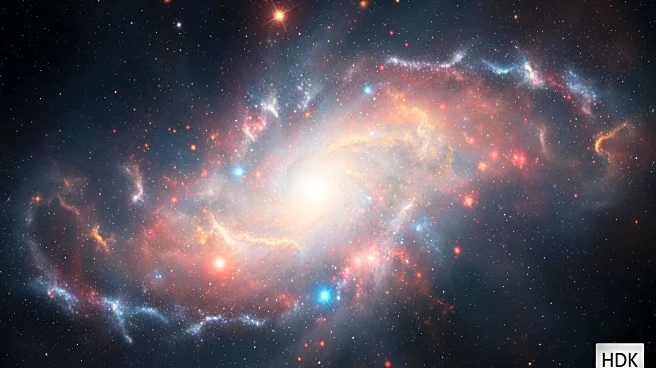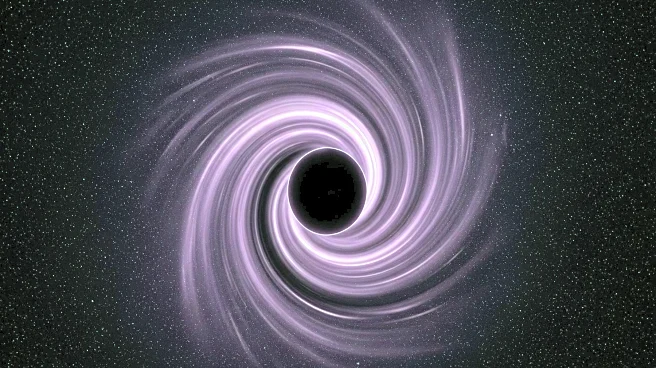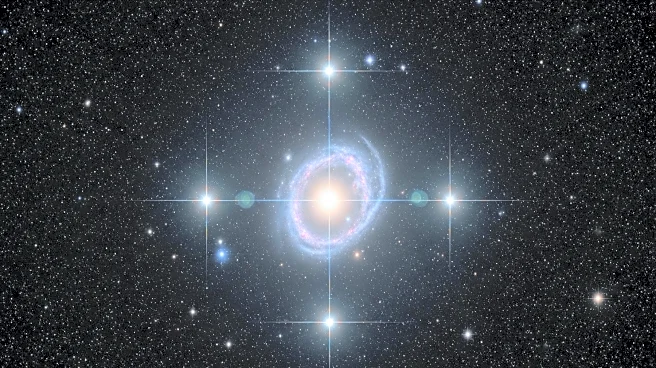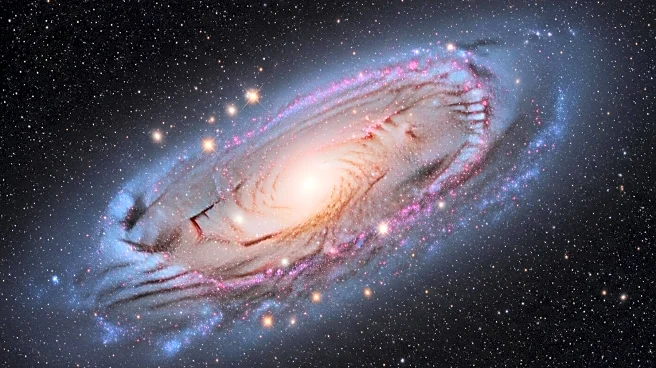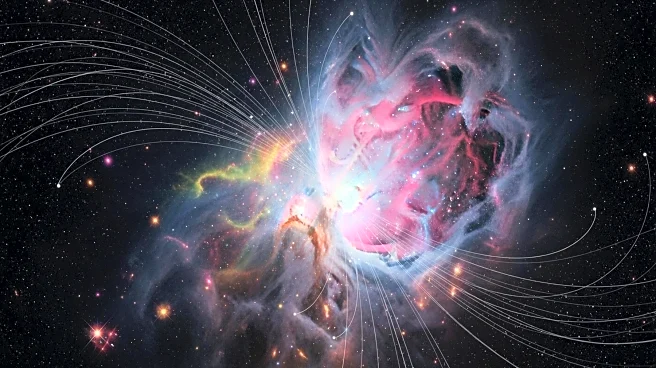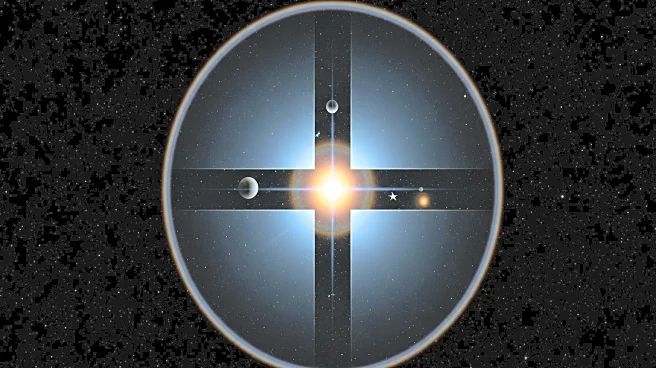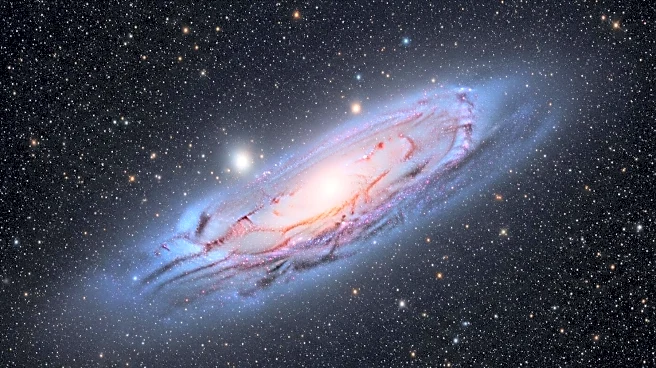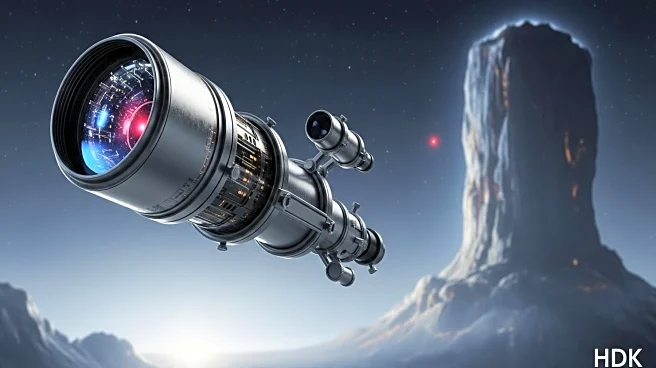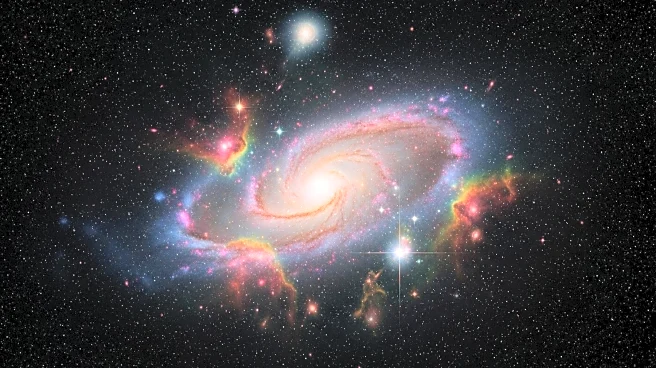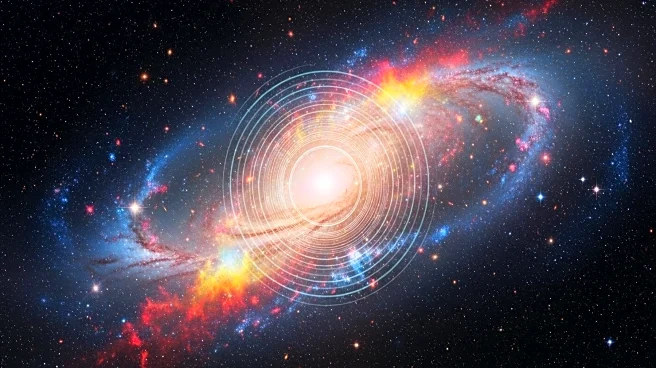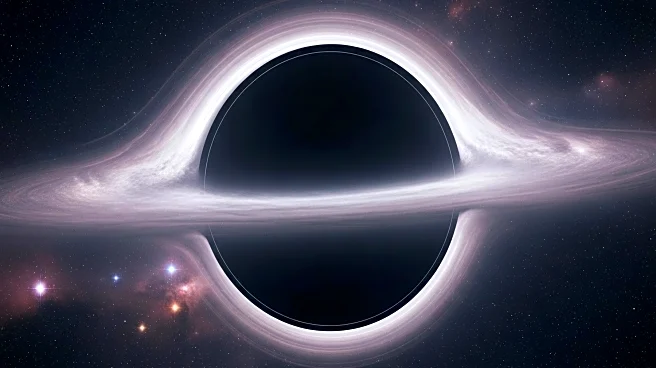What is the story about?
What's Happening?
A study conducted by SISSA, in collaboration with several universities, has revealed that the magnetic fields formed during the early stages of the Universe were billions of times weaker than a small fridge magnet. Despite their weakness, these fields have left quantifiable traces in the cosmic web, the filamentary structure connecting galaxies throughout the Universe. The research utilized around 250,000 computer simulations to study the cosmic web and validate the findings with observational data. The study, published in Physical Review Letters, specifies possible and maximum values for the strengths of these primordial magnetic fields, offering insights into the formation of the first stars and galaxies.
Why It's Important?
Understanding the primordial magnetic fields is crucial for refining knowledge about the early Universe and the formation of cosmic structures. These fields likely influenced the density of the cosmic web, accelerating star and galaxy formation. The findings provide a new upper limit for the magnitude of these fields, which is consistent with recent studies on the cosmic microwave background. This research could help improve theoretical models of structure formation and enhance our understanding of cosmic evolution.
What's Next?
The results of this study can be further validated through observations made by the James Webb Space Telescope. The new limits on magnetic field intensity will aid in understanding the impact of primordial fields on cosmic evolution and may influence future theoretical models.
Beyond the Headlines
The study highlights the importance of primordial magnetic fields in shaping the Universe, suggesting that these fields could be a legacy of events during cosmic epochs, such as inflation or phase transitions. This research opens new avenues for exploring the role of magnetism in cosmic evolution.
AI Generated Content
Do you find this article useful?
